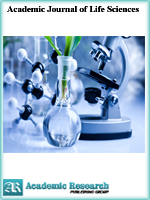Academic Journal of Life Sciences
Online ISSN: 2415-2137
Print ISSN: 2415-5217
Print ISSN: 2415-5217
Quarterly Published (4 Issues Per Year)

Archives
Volume 3 Number 7 July 2017
Hepatitis B Virus and Immunity
Authors: Obeagu Emmanuel Ifeanyi ; Obeagu Getrude Uzoma
Pages: 36-46
Abstract
Hepatitis B is one of the most common infectious diseases of the liver in the world and a major public health problem. The predominant routes of transmission vary according to the endemicity of HBV infection. In areas of high endemicity, perinatal transmission is the main rout of transmission, where as in areas of low endemicity, sexual contact amongst high-risk adults is predominant. All three coat proteins of HBV contain HBsAg, which is highly immunogenic and induces anti-HBs. The stability of HBV does not always coincide with that of HBsAg. Exposure to ether, acid (pH 2.4 for at least 6 hrs) and heat (98°C for 1 min; 60°C for 10 hrs) does not destroy immunogenicity or antigenicity. Antigenicity and probably infectivity are destroyed after exposure of HBsAg to 0.25% sodium hypochlorite for 3 minutes. Infectivity is lost after autoclaving at 121°C for 20 min or dry heat treatment at 160°C for 1hr. HBV occurs worldwide. The highest rates of HBsAg carrier rates are found in developing countries with primitive or limited medical facilities .In areas of Africa and Asia, widespread infection may occur in infancy and childhood. The overall HBsAg carrier rates may be 10 to 15%.The prevalence is lowest in countries with the highest standards of living, such as Great Britain, Canada, United States, Scandinavia, and some other European Nations. During HBV infection, the host immune response causes both hepatocellular damage and viral clearance. Innate immunity generally plays a role immediately after infection to limit the spread of the pathogen and initiate efficient development of an adaptive immune response. Innate immune response during the early phases of viral infections are mainly characterized by the production of type 1 interferon (IFN) α-/β cytokines and the activation of natural killer (NK) cells.



